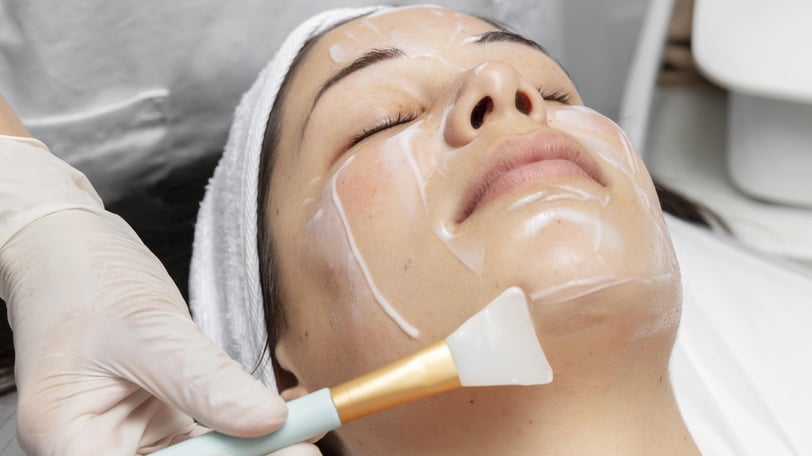Chemical Peels and Skin pH level
Chemical peels are a popular cosmetic procedure used to improve the appearance of the skin. They involve the application of a chemical solution to the skin. One important factor to consider when discussing - chemical peels and skin pH level.
Lara Polkovnikov
1/25/20242 min read


One important factor to consider when discussing chemical peels is the skin's pH level. pH is a measure of the acidity or alkalinity of a substance, and it is measured on a scale of 0 to 14. A pH of 7 is considered neutral, while values below 7 are acidic and values above 7 are alkaline. The skin has a slightly acidic pH, typically ranging from 4 to 6. This acidic pH is essential for maintaining the skin's barrier function and overall health.
Here is an overview of the relationship between chemical peels and skin pH:
Acidic Solutions: Chemical peels typically use acidic solutions to exfoliate the skin. These solutions can be categorized into different types based on their pH levels: superficial peels (pH 2-3), medium peels (pH 1-2), and deep peels (pH below 1). The acidity of these solutions helps to break down the bonds between skin cells, promoting exfoliation and cell turnover.
pH Adjustment: Before applying a chemical peel, the pH of the skin is often adjusted to enhance the peel's effectiveness. This is typically done by cleansing the skin with a mild acidic solution or using a pre-peel solution with a low pH. Lowering the skin's pH helps to optimize the penetration and activity of the chemical peel solution.
Skin Barrier Function: The skin's pH plays a crucial role in maintaining its barrier function. The acidic pH of the skin helps to regulate the activity of enzymes involved in the production of lipids (fats) that form the skin's protective barrier. Disruption of the skin's pH balance can compromise its barrier function, leading to increased sensitivity, dryness, and susceptibility to external irritants.
Post-Peel pH Restoration: After a chemical peel, it is important to restore the skin's pH balance. This is typically done by applying products with a slightly acidic pH, such as toners or pH-balancing moisturizers. Restoring the skin's pH helps to promote healing, soothe the skin, and maintain its natural protective barrier.
It is worth noting that while chemical peels temporarily disrupt the skin's pH balance, the skin has a remarkable ability to restore its pH levels back to normal. However, it is essential to follow post-peel care instructions provided by a dermatologist or skincare professional to ensure proper healing and minimize any potential side effects.
In summary, chemical peels are cosmetic procedures that use acidic solutions to exfoliate the skin and address various skin concerns. The skin's pH plays a crucial role in maintaining its barrier function and overall health. Adjusting the skin's pH before applying a chemical peel and restoring it afterward are important steps to optimize the peel's effectiveness and promote proper healing. Consulting with a skincare professional is recommended to determine the most suitable type of chemical peel and to ensure the skin's pH is properly managed throughout the process.


BUSINESS HOURS
Mon - Fri 11.00 am - 9.00 pm
Sat - Sun 12.00 am - 6.00 pm
© 2024 LPEsthetician
